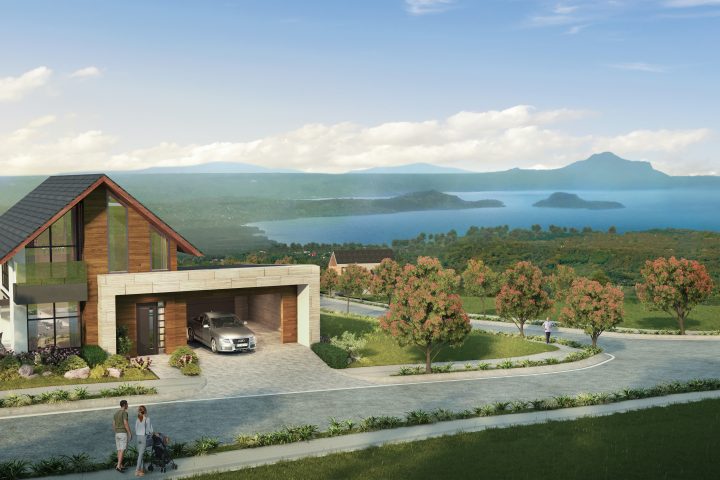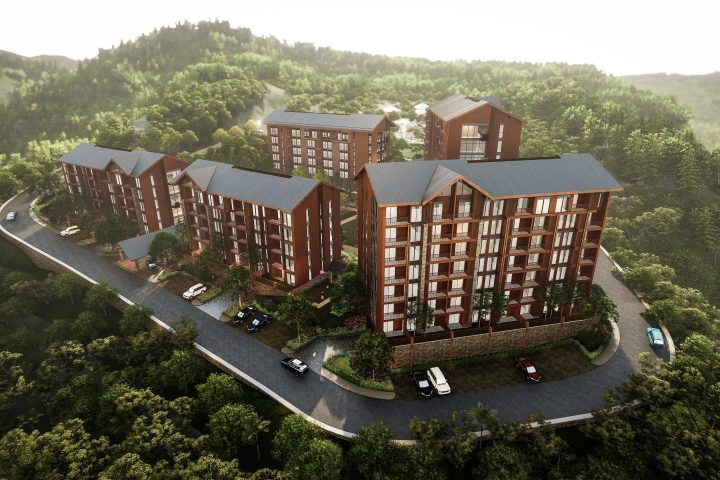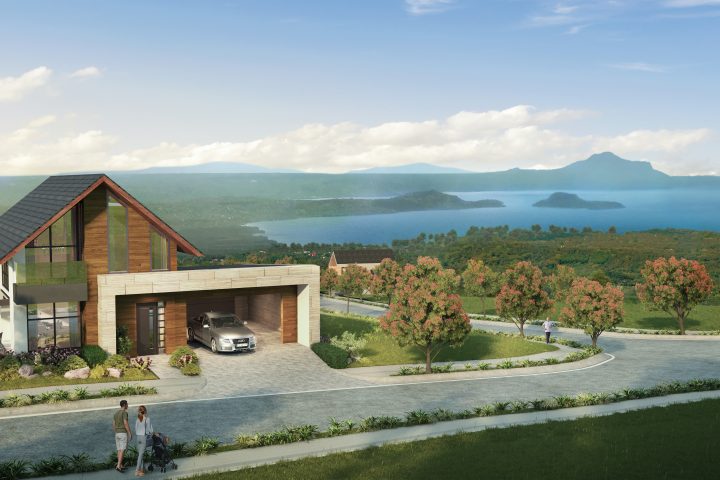BRIEF PROFILE OF TAGAYTAY
Moniker: Second Summer Capital of the Philippines
Classification: 2nd class city
Province: Cavite
Region: IV-A (CALABARZON)
Foundation: June 21, 1938
Land area: 66 km2 (25.10 sq mi)
Population: 71,181 (based on 2015 census)
Divisions: 34 barangays
Dialect: Tagalog
Religion: Roman Catholic, Protestant, Eastern Orthodox
Climate: Mild (tropical monsoon)
Major industries: Tourism, agricultural produce
Tagaytay, which is officially called the City of Tagaytay, is a component city in Cavite province.
Tagaytay is one of the most frequented places in the south because of its outstanding scenery. It overlooks Taal Lake and Taal Volcano and cold climate, given its high altitude. This makes both the volcano and lake viewable from several vantage points. This also explains where it gets its moniker and why tourism is one of its major industries.
Administratively, Tagaytay’s governance is divided into 34 barangays.
Etymology
A legend is behind the name Tagaytay.
The story involved a boy and his father who went out to hunt wild boars one day. They chased a boar, which then turned to attack them, starting with the father. The son shouted, “Tagâ, Itáy!” which means to chop or cut. The boy shouted repeatedly and loudly that it echoed in the alleys of the ridge.
The people heard by the hunters, wood gatherers, kaingeros, farmers, and residents. They talked about what happened for several days. Eventually, the sentence was corrupted to simply Tagaytay.
Another story, and a more feasible one relating to the origin of the place, is naming the place after tagaytay, which is a Tagalog term for a ridge. A ridge refers to a chain of hills or mountains forming a continued elevated crest that can be seen from a distance.
History
In 1896, during the Philippine revolution, the revolutionaries found refuge on these ridges and forests; those in Cavite, particularly in Masilao (now Amadeo), Malabon Grande (now General Trias), Mendez, Silang, Indang, and Dasmariñas as well as in Laguna and Batangas. Going to and from their destinations, they termed the process mananagaytay, which meant they would traverse the ridges.
The city was once a cogon land before it was discovered after the eruption of Taal Volcano. The vast stretches of cogon gave the Katipuneros a ready sanctuary when they needed to.
Tagaytay City became a chartered city on January 21, 1938, upon the enactment of the Commonwealth Act No. 338. It was authored by Representative Justiniano Montano and signed by President Manuel L. Quezon. Tagaytay is a planned city that covers areas of Mendez, Amadeo, and Silang.
Geography
With a total land area of 66 km2, Tagaytay represents 4.37% of Cavite province’s total land area. The city overlooks Manila Bay to its north, Laguna de Bay to its east, and Taal Volcano and Taal Lake to its south.
Tagaytay City is both upland hilly and upland mountainous, particularly on its easter and southern sections. Forests, open grasslands, and pine trees cover the said areas.
The city also lies along Tagaytay Ridge at the edge of Taal Caldera that stretches to up to 32 kilometers from Mount Batulaoand Mount Sungay in the west and east, respectively. The latter is the highest point in Cavite, at 709 meters or 2,326 feet above sea level.
Tagaytay Ridge also overlooks Taal Lake. The urban center is located atop the caldera rim. Deep ravines drop steeply to the lake and are found beyond the edge.
The sloping surface covers areas of Mendez, Amadeo, Silang, Indang, and Alfonso.
Such a unique geographic feature makes the development of a mountainous resort, for instance, possible. Case in point: Tagaytay Highlands, which is situated on the highest point of the city.
Tagaytay Highlands is a network of exclusive themed residential communities, including The Highlands, The Midlands, and The Greenlands.

Climate
Based on the Köppen climate classification, Tagaytay City has an Am or tropical monsoon classification. It means the city has milder temperatures and lower humidity than other cities in Metro Manila and the rest of the Philippines.
The average temperature is 22°C, although it tends to get colder from December to February. Humidity levels are at 78% compared with that of Metro Manila, which is at 81%. Because of its high elevation as well, Tagaytay City can get misty at times.
The cool temperature is one reason why people flock to the city for a honeymoon, picnic, retreat, or quick getaway. It is also an ideal place for casual sports such as kite-flying competitions.
Demographics
Based on the 2015 Census Report, Tagaytay has a total population of 71,181 people and 16,095 households. The figure equals a density of 1,100 inhabitants per square kilometer. Calculated against the 2010 census, it shows an annual population growth rate of 2.79%.
On weekends and holidays, the population doubles because of the influx of tourists and residents who have a second or vacation home in Tagaytay City.
About 93.58% of the people speak Tagalog, while the rest of the inhabitants speak Bicolano, Ilocano Cebuano, and other dialects and languages.
The majority of the Tagaytayeños, the demonym of the inhabitants, are Christian. The main religion is Roman Catholicism (95.36%), followed by Protestantism (3.37%). The rest of the population subscribes to Iglesia ni Cristo, Eastern Orthodoxy, and other religions.
Economy
As a second class city, Tagaytay is earning an average of more than Php20 million but less than Php30 million.
There are two facets of Tagaytay City: agricultural and urbanized. Agriculture remains to be an integral contributor to the city’s economy and development. About 1,292 hectares of land, or about 20% of the total land area, are dedicated to agricultural purposes.
Tagaytay’s soil is rich in volcanic components that make it suitable for farming. The slope also contributes to the capability of the land for cultivation. Its primary agri-products are pineapple, coffee, banana, cacao, camote, cassava, and root crops. Fruits and vegetables and cut flowers are also prioritized.
The cut flowers industry supplies both local and global markets. One has undoubtedly seen the stretch of Tagaytay-Calamba Road full of garden plant shops. Because of the residential and commercial booms, the land dedicated to flower farms was not as sizable as it was once. There used to be hectares of daisy and gladiola farms.
Cattle raising is also an important industry in Tagaytay City. The ranch supplies the local entrepreneurs’ beef needs since this is the main ingredient of bulalo (beef marrow stew), a famous delicacy in the city.
Another popular offering is crispy tawilis (herring). Tawilis is a freshwater sardine found in Taal Lake, although it is already considered endangered. Tilapia (cichild) farming is another source of livelihood of the Tagaytayeños.
As mentioned, tourism is one of Tagaytay’s primary industries. More on this in the Tourism section.
Infrastructure
Tagaytay has a well-linked road network, including national highways that connect Metro Manila to Laguna, Batangas, and, of course, Cavite. Secondary roads also adjoin key cities, particularly in the northwest part, such as Mendez, Silang, Alfonso, and Indang; southwest parts like Sta. Rosa and Calamba; and south, including Talisay.
SLEX (South Luzon Expressway) primarily serves the city through Tagaytay-Sta. Rosa and Tagaytay-Calamba roads. The first one passes Sta. Rosa and Silang, while the second, Tagaytay Highlands and Calamba Premiere International Park. This is also the main route if you are coming from Laguna, going to Tagaytay.
There is an alternative route from Carmona Exit to Aguinaldo Highway in Dasmariñas City. Manila-Cavite Expressway (CAVITEx) also serves the city via Aguinaldo Highway, which can be considered the point of convergence.
Other expressways are expected to serve the city soon are Cavite-Laguna (CALAEx) and Cavite-Tagaytay-Batangas (CTBEx) expressways. Both will have an interchange at Aguinaldo Highway.
The primary route is Tagaytay-Nasugbu Highway, Ligaya Drive, or Tagaytay-Talisay Road if you are from Batangas. The highway is from Lian to Tagaytay rotunda. The drive starts from a poblacion in Talisay and ends in Tagaytay Picnic Grove. Finally, the road is from Lemery-Agoncillo-Laurel-Talisay Road and ends in Tagaytay rotunda.
Tourism
Tagaytay City is a favored destination because of its cold climate. Tourists seeking Taal Volcano and Taal Lake’s charming views make the city their favorite place, especially during summer, the holidays, and Holy Week. As such, the Department of Tourism (DOT) cited the city as the top tourist destination in the Philippines in 2015. It is also one of DOT’s priority areas for tourism development. Likewise, it is Calabarzon’s tourist center.
Golf tourism in Tagaytay
Tagaytay is strategically poised to be an anchor of golf tourism since all golf courses in Cavite and Laguna are easily accessible from the ridge. It only takes an hour from the ridge to the nearest golf course.
Nevertheless, Tagaytay City is home to a few golf courses with unique layouts, although the most exciting ones are located inside Tagaytay Highlands.
The Highlands and Midlands golf courses are both designed by Richard Bigler, a renowned golf architect. The teeing grounds are specifically designed to blend seamlessly with the natural contours of the Tagaytay landscape. This resulted in challenging tees, including the 13th hole, which is located 84 meters above the green, and the 18th hole with a 150 yard-wide gully.
Both Highlands and Midlands putting surfaces are complemented by locker rooms with therapeutic and shiatsu body massage and sauna. Highlands has a cable car system that whisks golfers from certain tees to the clubhouse, whereas Midlands has a putting green.
Both have fully-stocked pro shops and an exclusive golfers’ lounge that offers international and Asian cuisines. Highlands is equipped with specialty restaurants and functions, an antique and curiosity shop, and an art gallery. On the other hand, Midlands has a veranda for private tournaments, overlooking Taal Lake and the golf course. It also has a funicular transport system.
Furthermore, Tagaytay Highlands is home to a signature collection of facilities and amenities that both golfers and non-golfers enjoy. Hence, it can be considered as a tourist destination of its own.
An active lifestyle awaits the residents, from booking a session at the fully-equipped gym to exploring nature through an ATV or cable car ride.
A few of the facilities to explore inside Tagaytay Highlands include:
- Indoor badminton, basketball, and squash courts
- Outdoor tennis courts with a grass surface
- Indoor table tennis
- Billiards hall
- Game room
- Internet and gaming center
- Children’s recreation and learning center
- Indoor and outdoor children’s playground
- Heated indoor lap pool and swimming pools
- Outdoor pools with jacuzzi clusters
- Disco bowling center (complete with a computerized scoring system and neon balls and pins)
- Horseback riding ring, 2.8 kilometers bridle path, and pony trail
- Fishing pier
- Kids’ biking course
- Treehouse
- Camping grounds and facilities
- The Animal Farm (where kids may pet zoo and home animals from various parts of the world)
There are numerous recreational and leisure facilities in Tagaytay City. These are:
- People’s Park in the Sky
- Picnic Grove
- Sky Ranch Theme Park
- Puzzle Mansion
- Antonio’s Garden
- Japanese Garden
- Nurture Wellness Village
- Café Veranda Cultural Show
- Museo Orlina
- The Bathhouse at Qiwellness Living
- Sonya’s Secret Garden
- Paradizoo
- Dreamland Arts & Crafts Café
- The Sculpture Museum
- The Animal Farm
- Casino Filipino
Tagaytay City also features places to buy pasalubong (take-home goodies) from. Mahogany Beef Market and Bulalohan, or simply Mahogany Market, is among these places. Others are:
- Ayala Malls Serin
- Twin Lakes Shopping Village
- Ilog Maria
The city is also a pilgrimage destination because of the number of churches, shrines, and retreat houses such as:
- Our Lady of Manaoag at Tierra de Maria
- Pink Sisters
- Caleruega Church
Festivals and observances are other key tourist attractions of the city. Special events include:
- Our Lady of Lourdes Feast
- Pista ng Pag-ibig
- Barbecue Festival
- Flower Festival
- Bulalo Festival
- Pinya Festival
As noted above, Tagaytay City is accessible through various points. It is relatively close to Metro Manila, taking one to two hours of travel through Aguinaldo Highway.










